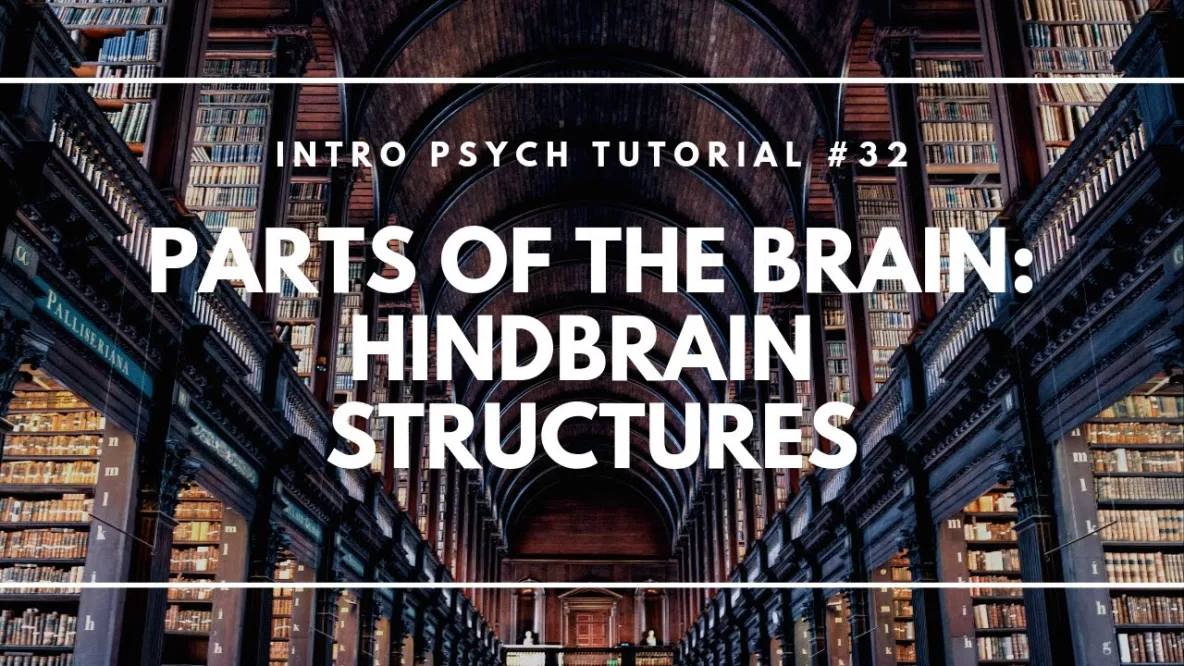In this video I explain the main regions of the brain: the hindbrain, midbrain, and forebrain, as well as the difference between the “old” and “new” brain in evolutionary terms. Then the location and function of four main areas of the hindbrain (medulla, reticular formation, cerebellum, and pons) are explained.
Don’t forget to subscribe to the channel to see future videos! Have questions or topics you’d like to see covered in a future video? Let me know by commenting or sending me an email!
Need more explanation? Check out my full psychology guide: Master Introductory Psychology: http://amzn.to/2eTqm5s
Video Transcript:
Hi, I’m Michael Corayer and this is Psych Exam Review and in this video and the next few videos we’re going to be looking at parts of the brain.
Now we can divide the brain up into three main regions; we have the hindbrain, the midbrain, and the forebrain. You might also see reference to the old brain and the new brain and this is just a way of talking about brain structures in terms of evolutionary time.
So the old brain refers to areas of the brain that have been with us the longest, structures that are necessary for survival and so we’ve basically always had them. These would be parts of the hindbrain and the midbrain. Whereas the forebrain can sometimes be referred to as the new brain because this controls complex processes and behaviors that arose later in evolutionary time so they haven’t been with us quite as long.
Alright, so in this video we’re just going to be looking at parts of the hindbrain. We’re going to look at four main structures of the hindbrain. The hindbrain is the region of the brain closest to the spinal cord. It begins where the spinal cord and the brain meet, which is the brainstem, and then moves up to a few structures around there. Essentially we’re looking at the base of the brain.
OK so four structures of the hindbrain. The first one that we’ll see is the medulla. So if we move up from the spinal cord and we get to the brainstem one of the first structures that we’ll find is the medulla. The medulla is involved in two very important processes. So it’s involved in heart rate and respiration, breathing. Obviously these are two very essential functions, without these you wouldn’t be alive. So this is obviously a crucial area of the brain.
If we move up from the medulla we get to the reticular formation. And the reticular formation is a group of neurons, it’s a system, that is involved in things like our level of consciousness for awareness of our surroundings. It would be involved in things like a state of vigilance. So when you have that very alert feeling, for instance if you were suddenly being preyed upon by some predator, you get this feeling of intense alertness & focus, part of that would be controlled by the reticular formation.
If we moved up from there and a little bit behind the brain stem we see an area that looks just like the little brain. This is the cerebellum. And the reason it’s called the cerebellum is that this is Latin for “little brain”. The cerebellum is involved in motor control so fine motor movements coordinating your movements, part of that is happening in the cerebellum.
The last structure that we’ll look at is the pons. This is also a Latin term and this is Latin for “bridge”. You might be able to remember this if you know a romance language like in Spanish, you might know that bridge is “puente” that comes from the same Latin root. In French it would be “pont” or in Italian “ponte” so that might help you to remember that pons is Latin for bridge.
The pons is the bridge between the brainstem and the cerebellum and the rest of the brain. So it serves to connect all these areas. OK so let’s take a look at the brain and see where each of these areas is in the brain.
OK so here we have a brain. The hindbrain is just this lower section here. So the spinal cord be coming up here and the first area that we would get to would be the medulla. And if we move up from there we would get to the reticular formation which is involved in our level of awareness.
And back here we see this section that looks like a little brain so you can guess that that is the cerebellum. And finally we have the pons and this is this sort of bulging area here at the top of the brainstem. This is going be the connection between the lower areas of the brainstem here and the cerebellum here and then the rest of the brain. So here’s our bridge or our pons.
Alright so those are the four main areas of the hindbrain. I hope you found this helpful, if so please like the video and subscribe to the channel for more.
Thanks for watching!

